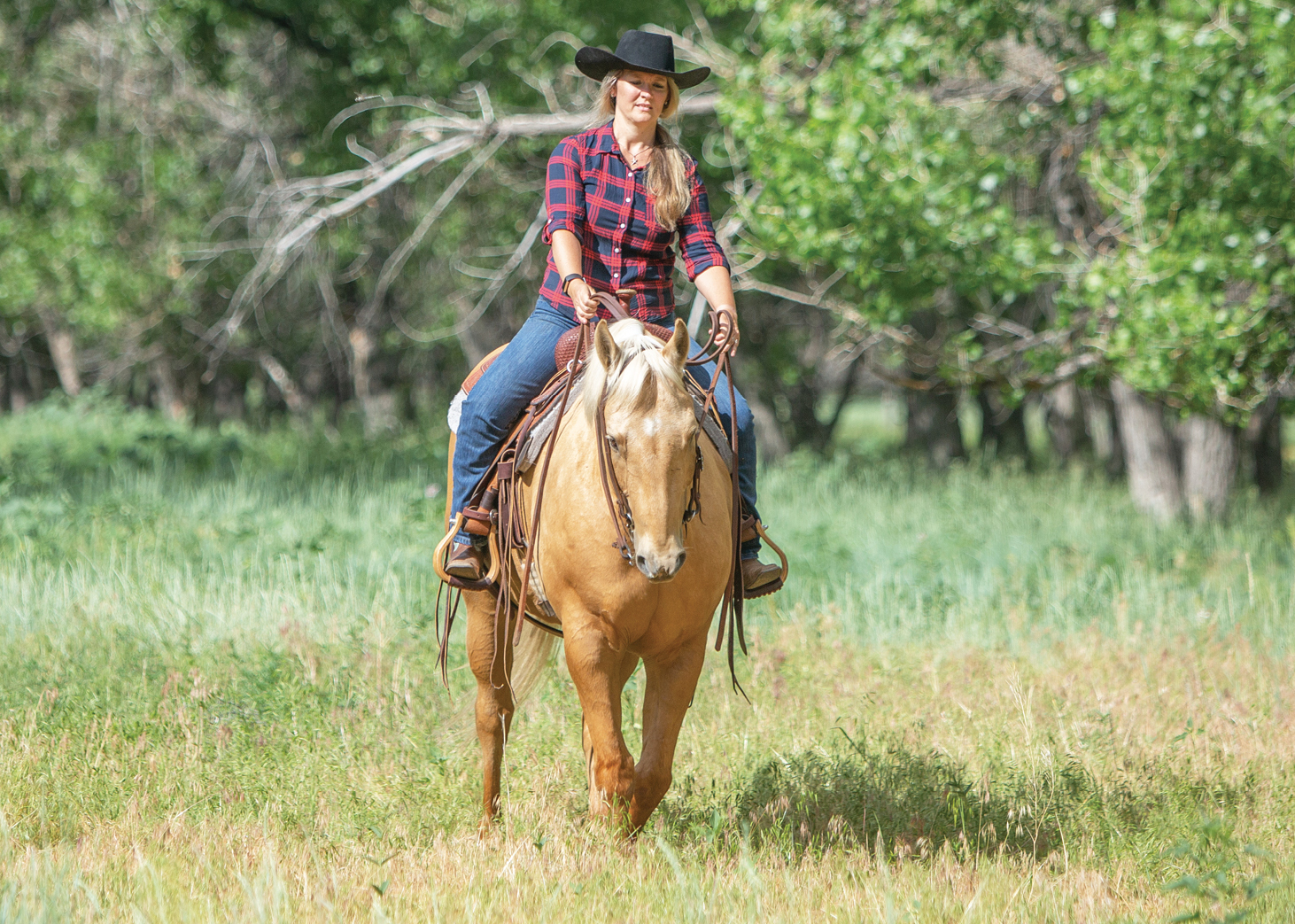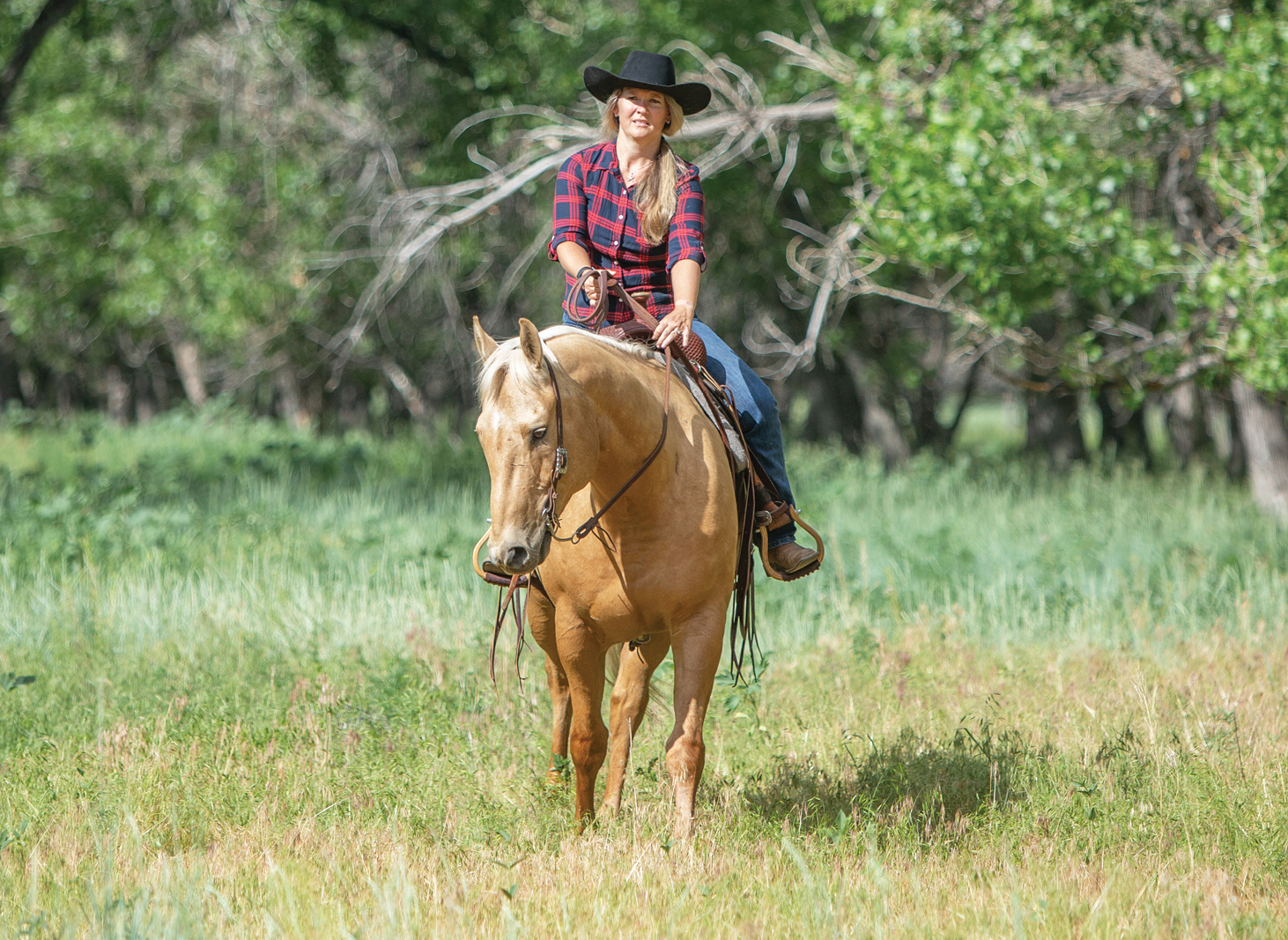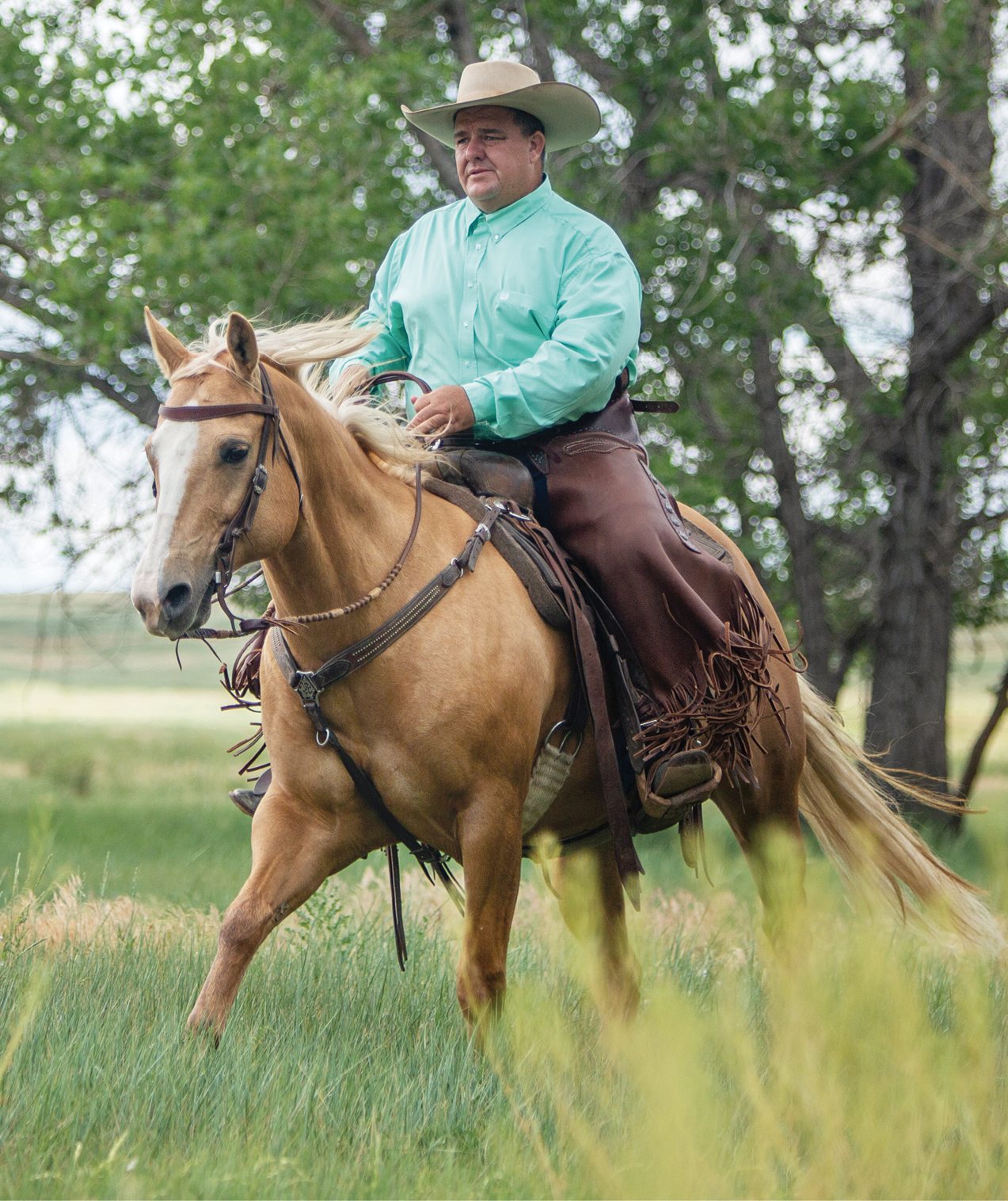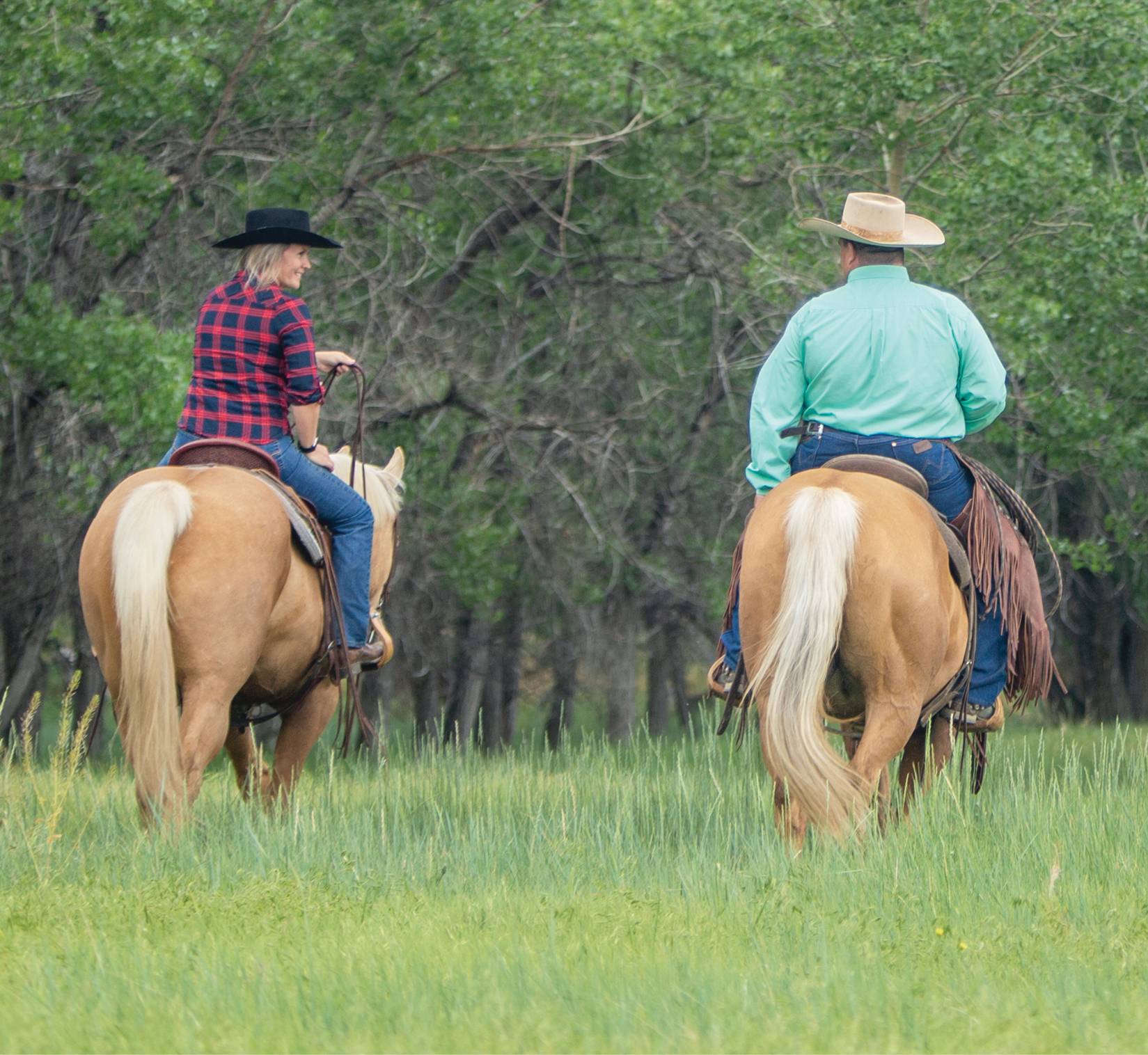You ride regularly in the arena but riding on a trail feels a bit scary. While your horse is well-trained and ready to perform maneuvers, you’re not sure of his on-the-trail experiences. Without a confined area, it all feels open and new. You want to enjoy the outdoors without fearing a spook or a bolt. How can you make sure that you and your horse enjoy your time on the trail?
Here, I’m going to guide you through exercises to make sure your horse is tuned into your cues, and provide you with tips to help you relax and be your horse’s leader as you ride through new territory. With these tools, you’ll gain confidence when you have a plan for riding in the great wide open.
Breathing First
My first three rules for riding on the trail are to breathe, keep breathing, and have fun. If you smile and have fun, you can’t help but to breathe while you’re at it. Once you’re breathing, you can communicate to your horse with confidence and purpose.
If you forget to breathe, you’re more likely to send a message of tension to your horse. And when you get tight and tense on the trail, you may choke up on the reins and squeeze your legs without even realizing it. Your horse won’t know what you’re asking him to do if your whole body’s cues are tense. Instead, take a deep breath before you ask your horse to do something.

Heidi Nyland Melocco
If you’re tense because you’re feeling fearful, you have two options: You can find excuses and run or you can face excuses and ride. Both viewpoints build an acronym for how you’ll respond to F.E.A.R. If you choose the latter, and want to face your excuses and ride past them, you can use breathing exercises to help you stay confident in the saddle and ride as your horse’s leader. Plus, if you choose to have a positive attitude and be a leader to him, you can ride him almost everywhere.
To face your fears, practice your deep breathing as soon as you mount up. Smile and sit up straight. As you sit up tall—instead of hunching forward—you’ll open your diaphragm making it easier for you to breathe.

Heidi Nyland Melocco
Sitting up will also stop you from gripping your horse with your knees. If you find yourself hunched forward in a fearful position, you’ll grip and convey tension to your horse more easily. As you breathe deeply, your legs will relax and stretch down. In this position, you’ll also be able to go with your horse’s motion more easily. If he makes a quick move in response to something spooky, your athletic riding position can keep you centered in the saddle instead of reacting to the motion and trying to keep up with him after he’s already moving in a different direction.
Pre-Trail Check
Think of riding just as you would in your home arena. If you would prep your horse for a training ride in the arena, prep him the same way before you head down the trail. You’re more likely to get in trouble if you skip the warmup and just cinch up and head on down the road. Before you head out for a trail ride, check in with your horse, see where he’s at, and let him know he can relax and follow you as a leader no matter where you are.
To properly warm up before you start your ride, look for an open space to work your horse. Mount up and ask him for a steady walk. You want to make sure you have control of all his body parts before you head out—just like you would when riding in an arena.

Heidi Nyland Melocco
Once you’re walking around, start asking your horse to flex his neck side to side and then ask him to move his hindquarters. Being able to push your horse’s body in any direction you ask him to will assure you that you have control of his body if he does find something spooky on the trail. It’ll also help you both get relaxed—even if you’re in a new environment.
Focus on your breathing as you ask your horse to move to the right and left. Make sure that you’re strategic in your cues. When you cue with your reins or use your legs to push your horse’s hip around, make sure that you’re doing it slowly. Your horse needs to know that he can trust you to take care of him in any situation. If you get tense and become quick with your hand or leg, he’s going to get nervous with every little movement you do.
To bend your horse, slowly slide your left hand down your left rein and place your left leg back behind the cinch to cue for the horse’s hindquarters to move to the right. Keep your right rein loose. Allow your horse to move a few steps then center your reins and direct your horse to step straight forward.
Next, repeat the flexing move to the right. Take your right hand down to shorten the right rein and slide your right leg back. Allow your horse to move his hindquarters to the left for a few steps. Keep in mind that you want a smooth, drifting reaction. Breathe and move slowly to guide him rather than demand he move his body immediately. If it takes him a minute to respond to your cue, that’s OK. Once your horse drifts to the left for a few steps, look up, center your reins, and ask him to step forward.
Your horse will tune into your cues as you do this work before your trail ride. Plus, you’ll have an activity to work on so that you can get comfortable in your environment, and relax your body and steady your breathing.

Heidi Nyland Melocco
Ride to It
Once you ride past your initial practice area, it’s important to keep thinking of yourself as the leader. If your horse raises his head in reaction to something scary he sees or hears, keep your body centered in the saddle, stay relaxed, and ride toward the scary object.
If you respond to your horse’s spook with tension, you’ll always be behind the motion—reacting after it’s already happened instead of dancing with your horse. But if you lean too far back, you’ll be behind the motion and won’t be able to stay with your horse if he moves forward. If your tension pulls you forward, you won’t stay with him if he draws back in a fear response. Instead, stay centered, making sure your body is in line so you can be an active rider regardless of the situation. Engage your core to help keep your body straight, and keep your heels aligned with your hips and shoulders to help you stay in that athletic riding position. To test your body position, stand up in your stirrups. If you fall forward or backward, or have to grab your horn to stay centered, chances are, you’re not in a proper riding position. Adjust your legs so they are underneath yourself and then test your body position once again. If you feel out of position, don’t be afraid to reposition yourself at any point when you’re in the saddle.
If there’s wildlife on the trail, your horse may raise his head, point his ears, and freeze for a moment to evaluate if he’s in danger. It’s important that you keep your horse moving, get his attention back on you, and show him that he can have confidence when he’s around unfamiliar territory. You must ride with a purpose toward the alert-inducing object and stay confident in yourself, so your horse feeds off your energy and knows he’s not in danger.

Heidi Nyland Melocco
If you notice your horse freezes up, you need to immediately get his feet moving and his focus back on you. Find your breath and gather your thoughts so you aren’t panicked, and then start cueing your horse forward. Move your rein hand forward and walk or trot with purpose directly toward the cause of the spook. When your horse perks his ears forward and approaches the spooky object, he’ll be curious and want to investigative it rather than walk toward it with a fearful mindset.
Continue riding toward anything that may seem new to your horse. If there’s a downed log on the trail, choose to ride over it and give your horse something to focus on. When you do that, look up, pick your spot, and keep your forward motion as you walk over the obstacle.
If you actively ride every step, your horse will stay engaged and activate his mind to see what you want him to see. This stops him from seeing something to spook at and reminds him that as his leader you won’t put him in a bad situation when you’re out on the trail. If you keep your ride engaging and make sure you’re breathing and actively riding for the entire ride, you’ll have nothing to fear when it comes time to hit the trails.






